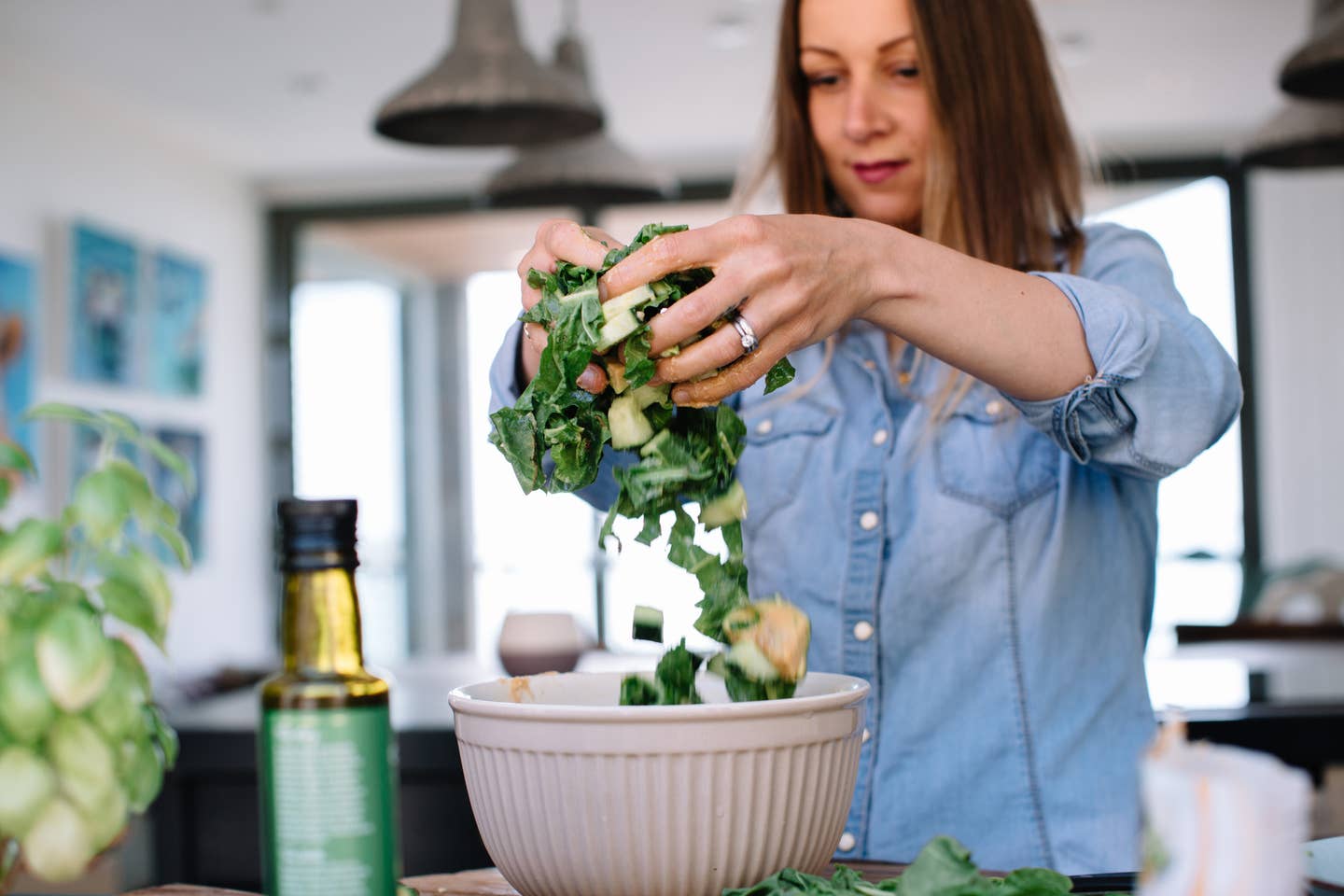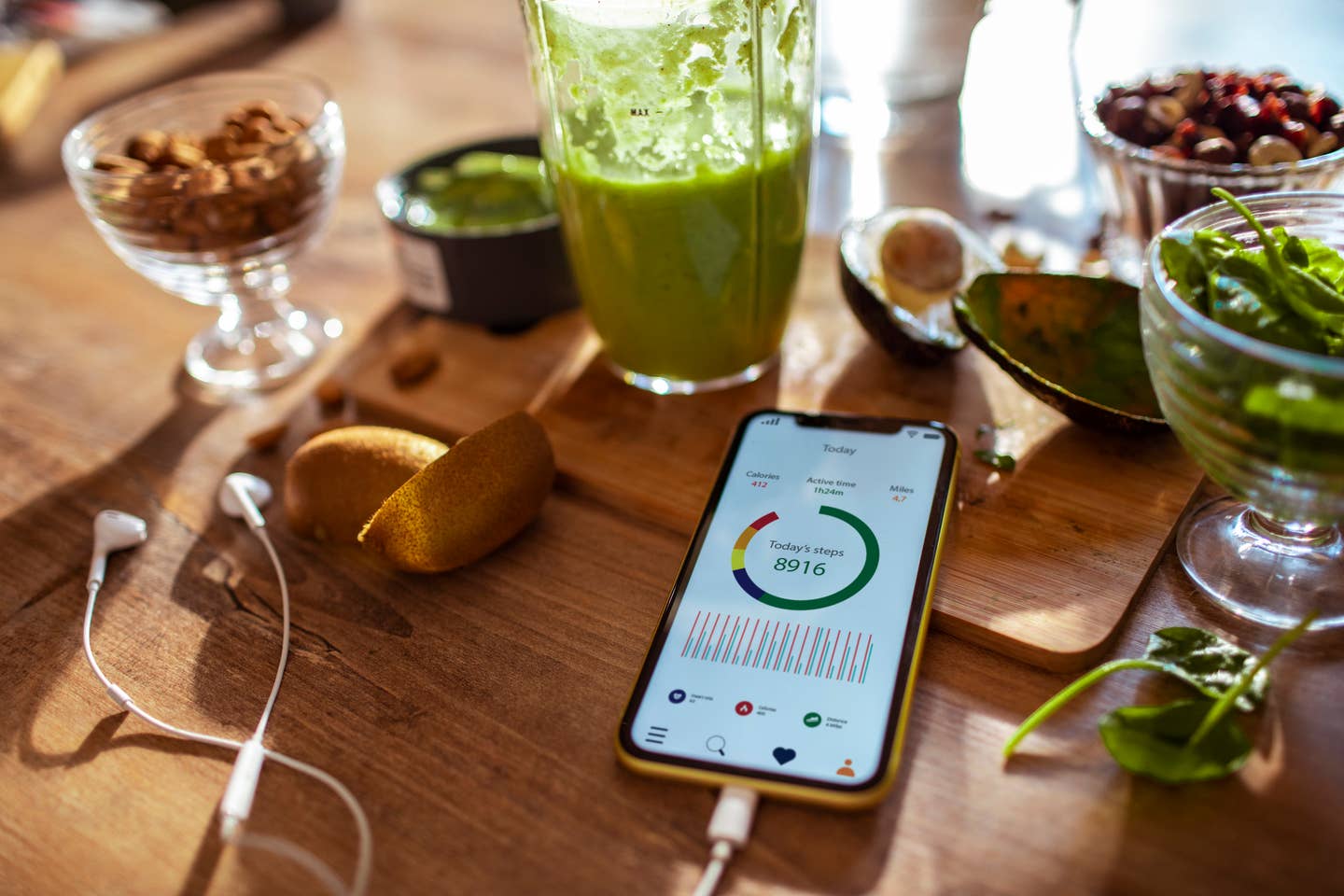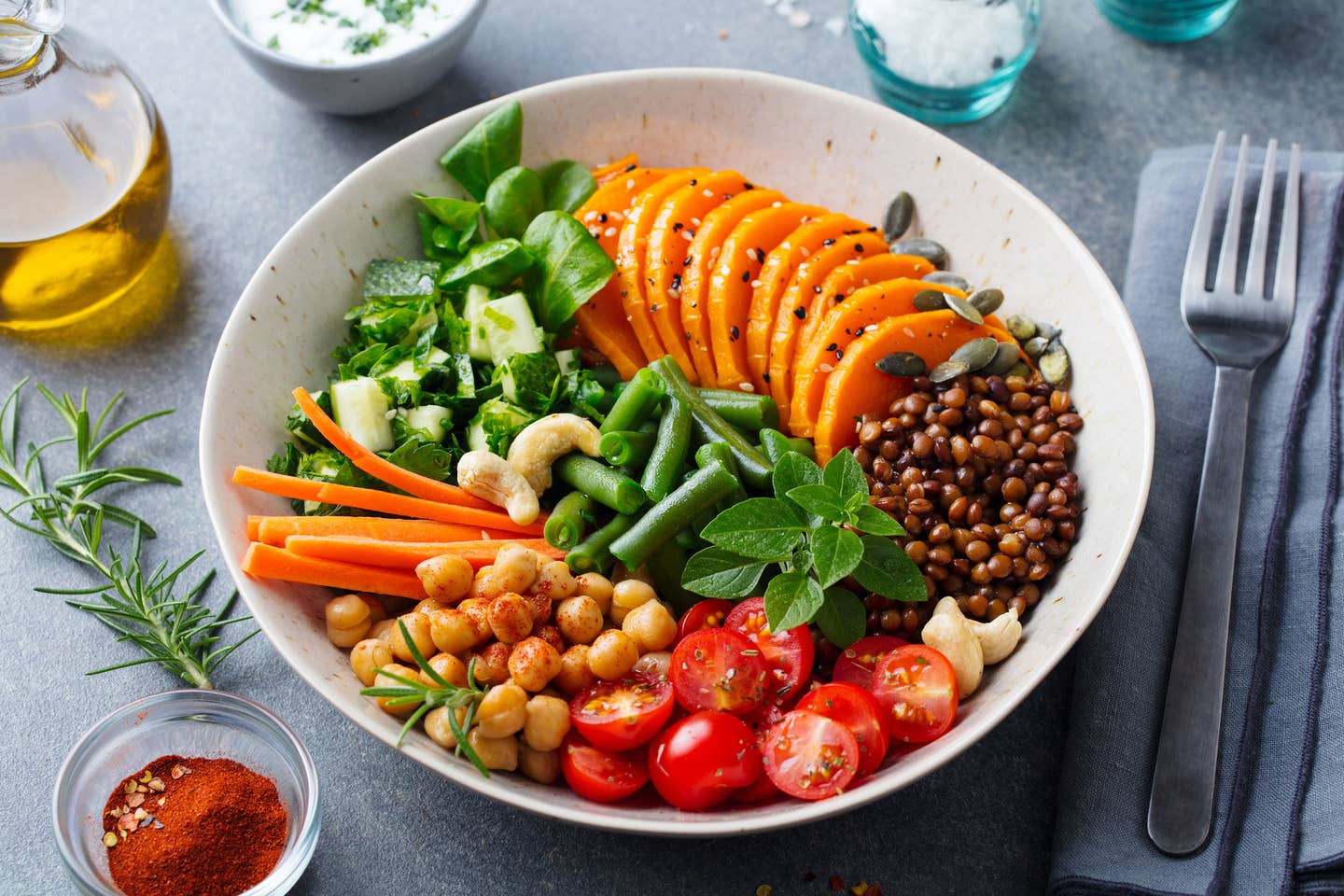
To Lose Weight, Which is Better, Smoothies or Juicing? An RD Answers
It’s a battle of smoothies vs juicing: Which is better for general health and to promote sustained weight loss? Both help you consume more fruit and vegetables, full of antioxidants and nutrients, but because juice takes out the pulp and fiber, and smoothies leave it in but add more calories, health-seekers and dieters have debated: Is the juice worth the squeeze? Here is the latest research on the benefits of juices and smoothies for sustainable weight loss, long-term health, and the goal of getting more servings of fruits and vegetables daily.
First, let's start with the basics: Juicing involves extracting the juice from fruits and vegetables and separating out the pulp, which contains all the fiber. Smoothies require blending the fruit and adding enough water, ice, almond or oat milk (or other liquid) so that it gets liquified, for a drinkable consistency.
If you’re unsure which route to take when it comes to your morning ritual or as a meal replacement or a pre-workout or post-workout snack, here's what the research has to say.
What research says about juicing, and how to do it right
Juicing gets a lot of disapproval from experts who express skepticism as to whether or not drinking the juice without the pulp and fiber is actually beneficial, since fiber is known to keep blood sugar in check, which in turn lowers insulin response and helps your cells uptake calories and energy slowly, so you avoid the rollercoaster of blood sugar spiking and dropping. The result is you feel full longer, your fat burning goes into overdrive and insulin stays relatively low, meaning your body does not need to store the extra energy as fat. Fiber is the unsung hero of dieting since it helps your body regulate energy uptake. The pulp contains so much durable natural fiber that it can be packed in containers and stored in the fridge to be used later as the base for other recipes, including delicious veggie burgers.
Another consideration is whether you are buying pre-packaged juices in containers that look healthy, but are not necessarily as "natural" as their packaging implies. Some companies are making a killing selling prepackaged juices at exorbitant prices to capitalize on the craze, and our lack of enthusiasm for having to shop for produce, squeeze a full stalk of celery or more, then clean the juicer, for just a few ounces of satisfaction. There's a wide discrepancy in the quality of products on the market, so read the label for additives that are far from natural.
Study: Juicing switches on healthy gut bacteria, which promotes weight loss
When you drink it fresh from your kitchen, juicing has been scientifically shown to be extremely beneficial to weight loss efforts—even when you aren't adding the pulp back into your diet. In a study published in Scientific Reports, 20 healthy adults consumed only vegetable or fruit juice for three days and then continued their customary diet for the next 14 days.
On day four after finishing the 3-day cleanse, study subjects experienced a significant loss of both weight and body mass index but more surprising was that their weight loss continued, even over the following two weeks of eating normally. On day 17 the researchers measured the participants' gut microbiome and found that even two weeks after the cleanse, the gut microbiome was still shifted to more beneficial (healthy) bacteria, so juicing appears to switch on your healthy gut bacteria that can help support weight loss. Even adding juice to a healthy diet appears to benefit your microbiome, since every serving of fruit and vegetable helps promote the healthy bacteria balance in your gut. Studies have shown that the microbiome is vital to how your body metabolizes food, regulating inflammation and your long-term heart health.
All the beneficial bacteria in our gut thrive off of a healthy diet, and fruit or vegetable juice contains polyphenols, oligosaccharides, and nitrates, along with a small amount of fiber, which provides prebiotic effects that feed the "good" bacteria, while eating less inflammatory meat, dairy and saturated fat (in chips, cookies, and processed foods) suppresses so-called "bad" bacteria. Do these together for the best effects and to lower inflammation and keep blood sugar steady.
Another study published in 2018 by Food Science and Biotechnology found that participants drinking fruit and vegetable juice for three weeks had a significant improvement in their gut microbiota. This resulted in reductions in body weight among both male and female subjects, and improved symptoms of diarrhea, constipation, fatigue, and skin breakouts.
The best practice, since juice only leaves in .5 percent of the fiber, is to add back in some or all of the pulp so that you get both, the juice and the fiber when drinking your juice in the morning.
What research says about smoothies and the role of fiber in weight loss
Since smoothies consist of whole fruit and vegetables, including the fiber and in the case of berries and cherries, the skin, so they are more filling and are considered a meal or snack substitute. A meal would have 300 to 500 calories and a snack 150 to 200 calories.
Fiber is the key to what makes smoothies such a success when it comes to dieting and weight loss. People who eat the most fiber have the lowest BMI, according to one study, which measured diets of 345 participants and found that dietary fiber intake, independent of macronutrient and caloric intake, promotes weight loss. So no matter what else they ate, or how many calories they took in, those who ate the most fiber lost the most weight in six months.
Meanwhile, Americans are getting woefully little fiber in their daily diets. Fewer than 1 out of 10 Americans are meeting their daily dietary needs for fiber, which ranges from 21 grams a day for women to 38 grams for men, but those numbers are considered the minimum we should get, according to the USDA. Fiber, which is only found in plant-based foods like vegetables, fruit, legumes, nuts, and seeds, helps your body regulate the way calories are converted to energy, slowing down the digestive process to keep blood sugar low, insulin in check, and fat burning on high.
A 2019 review published in Frontiers in Nutrition states that because fruit is so high in fiber, it is helpful in promoting weight maintenance or weight loss over a 3 to 24 week period. It’s also been shown that whole fruit intake could decrease your calorie intake, especially when it’s consumed before a meal or when eaten in place of other high-calorie foods.
Eating at least two servings of fruit a day has been shown to be the most beneficial, for a healthy microbiome to promote immunity, anti-inflammation, and long-term heart health. That's also the amount of fiber your body needs to switch on your gut's healthy microbiome which ultimately keeps blood sugar low, fat burning high, and promotes natural weight loss.
Although the studies on smoothies and weight loss are limited, there is research that indicates smoothies have the potential to boost your daily intake of fruits and vegetables in diets while still providing a satiating effect. A 2020 study published in the Current Research in Nutrition and Food Science found that calorie-filled liquids (such as juices tend to be less satiating than solid foods, with the exception of soups.
Researchers believe that smoothie consumption could follow the same pattern since smoothies (like soups) have a viscous consistency and contain whole ingredients. That’s because smoothie consumers state that they “consume a smoothie to relieve hunger” rather than “drink a smoothie to relieve thirst.”
Frequent smoothie drinkers typically consume:
- Fruit or vegetables (including fresh, frozen, or canned)
- Milk and non-dairy alternatives
- Sweeteners like honey or agave
- Fruit juice
- Nutrition supplements
- Nuts and seeds or nut butter
Smoothies contain more calories, but they also allow you to consume more fiber, nutrients from fruit and vegetables, nuts, and nut butter so they provide lasting energy and if you leave out the sweeteners, the fiber keeps blood sugar steady and energy-burning for hours after.
Alternate between smoothies and juicing. Better yet, combine the two
A little fresh-squeezed juice added to your smoothie can give you the best of both worlds. Not only are you able to juice various fruits and vegetables to add back in, but you're getting a wide variety of nutrients from the produce without “bulking up” the smoothie.
If you’re looking to get various nutrients from different fruits and vegetables, blending them together will likely create a large smoothie enough for two or more servings. That’s great for sharing or portioning out for later, but don't drink more than about 300 calories in your smoothie unless you're using it as a meal substitute. Use as many different varieties of fruits and vegetables to increase the number of nutrients without adding to your calories.
For a smoothie of the day recipe delivered to your inbox for the next 2 weeks, sign up for the Smoothie of the Day newsletter from The Beet, and get great ideas of how to add variety.
Having a combination of juice and smoothie keeps the fiber and all the nutrients, which support immunity and energy as well as long-term heart health and a balanced gut microbiome. Fiber is the key to keeping blood sugar low, and energy absorption steady. It sounds counterintuitive, but by slowing down the digestion and absorption of the calories and natural sugars found in fruit, fiber helps energize you and keep you feeling full for longer, which promotes natural weight loss.
Bottom line: As long as it’s done in a healthy way, studies have shown that juicing could be beneficial when it comes to weight loss.
Although the research on smoothies and weight loss is limited, smoothies are higher in fiber which has known benefits when it comes to losing weight and keeping you feeling full longer. Your best option: Alternate between the two.
You may think iron is synonymous with meat, and while animal protein certainly has it, that doesn’t mean you can’t get enough iron if you eat a mainly plant-based diet. In fact, you can, if you know the right foods to choose and how to pair them. The daily recommendation from the National Institutes of Health (NIH) for iron intake is 18 milligrams (mg), but not all iron sources are created equal. Here’s what plant-based eaters need to know about iron and which iron-rich foods are best to help reap the benefits.
1. White Mushrooms
1 cup cooked = 3 mg iron (17% daily value (DV))\There are many reasons to eat mushrooms on the regular, but their meaty texture (try a Portobello cap as a meat replacement for a burger!) and ample protein are two of the highlights. Add them to your stir-fry, tacos, or even instead of meat in a faux Bolognese sauce.
2. Lentils
1/2 cup = 3 mg iron (17% DV)You don’t need to eat a huge serving of lentils to get a hearty dose of iron. Just a half-cup provides close to 20% of the iron you need in a day. Just like mushrooms, lentils have a meaty texture that works well in burgers, tacos, or grain bowls.
3. Potatoes
1 medium potato = 2 mg iron (11% DV)The poor potato has gotten such a bad rap. Fear of this carb-rich spud is unwarranted because it’s actually an affordable and delicious source of iron and potassium. So go ahead and have that hash, baked potato, or potato soup and leave the skin on for some added fiber.
4. Cashews
1 ounce = 2 mg iron (11% DV)Most nuts contain iron, but cashews are a standout because they have less fat than some of the other nuts. One ounce of cashews (about 16 to 18 nuts) has 160 calories, 5 grams of protein, and 13 grams of fat. Add a handful of cashews to smoothies, soups, or sauces for some extra creaminess.
5. Tofu
½ cup = 3 mg (15% DV)Not only does tofu have plenty of protein and calcium, but it’s also a good source of iron. It’s very versatile and takes on the flavor of any sauce or marinade, making it a great meat substitute.Keep in mind that you can easily get the iron you need from a plant-based diet.
More From The Beet






